When I Try Adding Decals in Solidworks It Continuously Wraps the Decal
Nearly every commercial product has some sort of product marking. It could be a rating plate, the brand name or logo, or instructions to assemble the batteries. Product marking can be an adhesive label applied to the product, or, artwork that is pad printed.
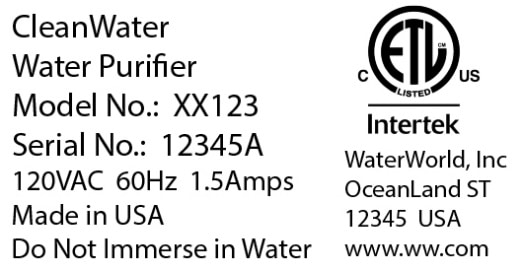
![]()

In SOLIDWORKS, we represent the product markings with Decals. SOLIDWORKS, out of the box, includes a few decals and are found in the Task Pane > Decals folder.
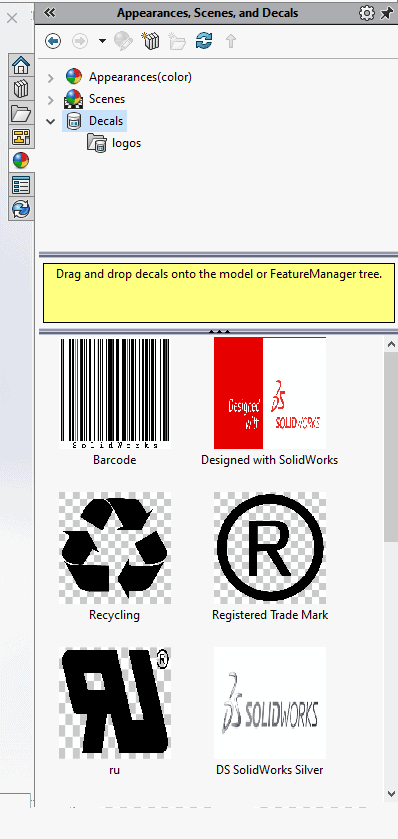
But what if we have to create a SOLIDWORKS decal from scratch? Perhaps we have an existing image to apply to our model, or, perhaps we need to create artwork in a 3rd party software.
For custom decals, typically, an individual face on the part is created to place the decal. This decal face can be created using a Split Line. A 1:1 drawing of the part is created and imported via .dxf, .pdf, or .jpg into a 3rd party software to develop the artwork. This ensures the decal is accurately sized and proportioned. Plus, we can dimension the Split Line so manufacturing knows exactly where to place or print the artwork.
Having said that… this step is not absolutely necessary, as we can scale and position decals in SOLIDWORKS.
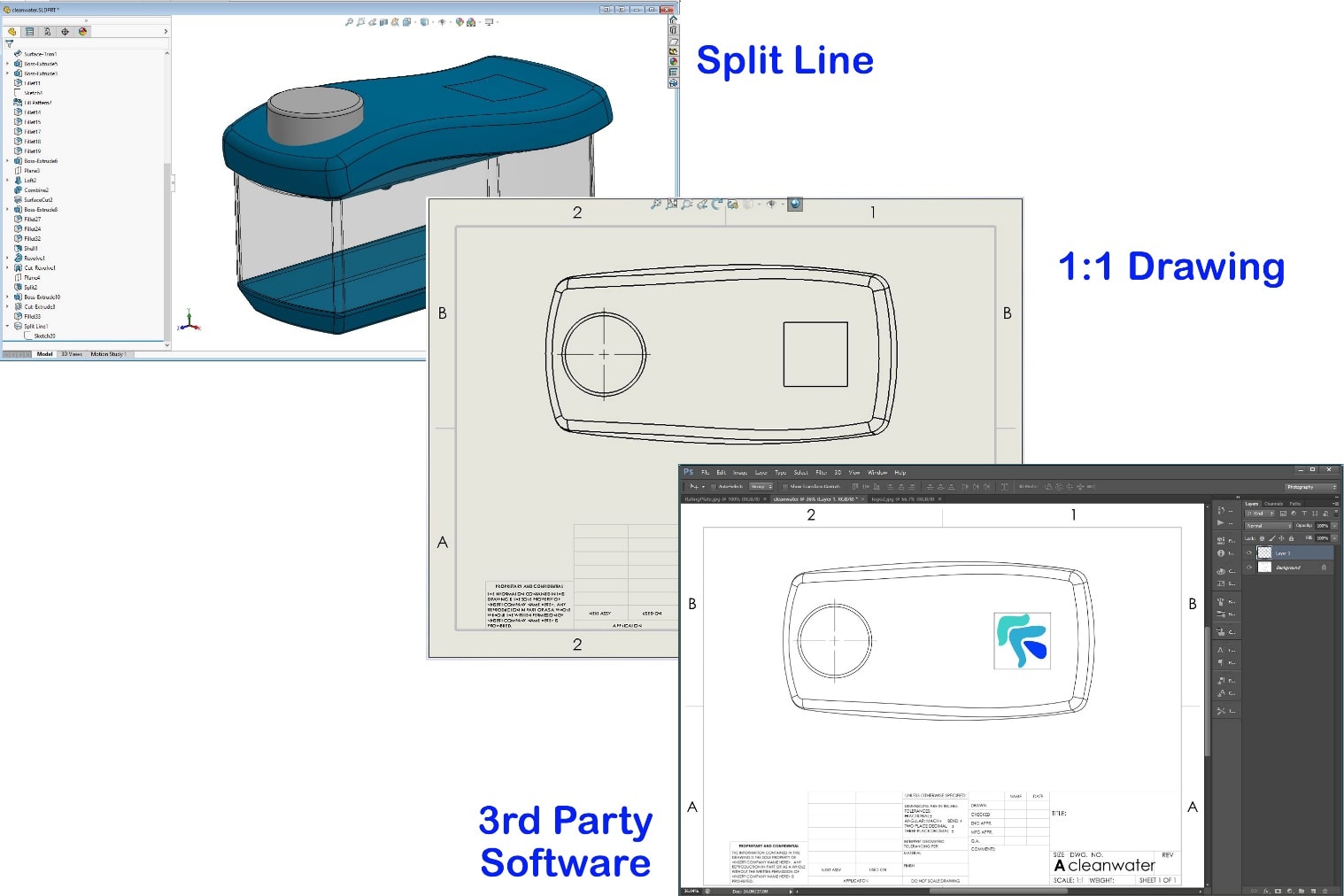
Creating Artwork
When creating the artwork, for best results,
- The edges of the artwork should be crisp, no soft blended edges.
- Use a solid background for easy background removal.
- Best option is having a transparent background and save as a .png or .tif file format.

Save the artwork to one of the supported file formats for decals.
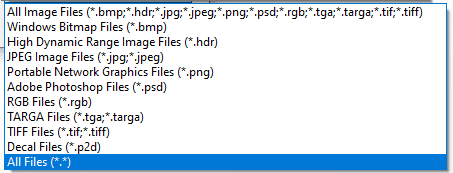
Creating Decal in Solidworks
In SOLIDWORKS, we will create a decal from the artwork. Decals are created in the Display Manager > Decals. Right click in the Display Manager and Add Decal.
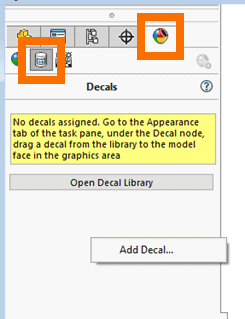
The Decals Property Manager opens with 3 tabs: Image, Mapping, and Illumination. The Illumination Tab sets the lighting properties of the decal. Some settings require a light to be enabled in PhotoView 360 (SOLIDWORKS Pro/Premium required). We will be concentrating on the Image and Mapping Tabs and allow the default for illumination.
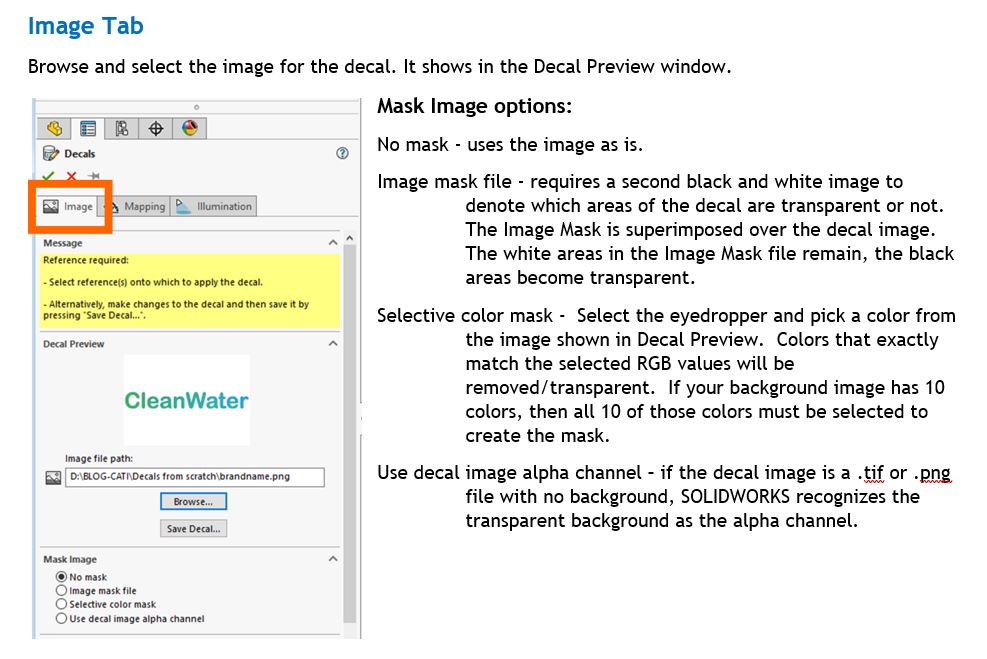
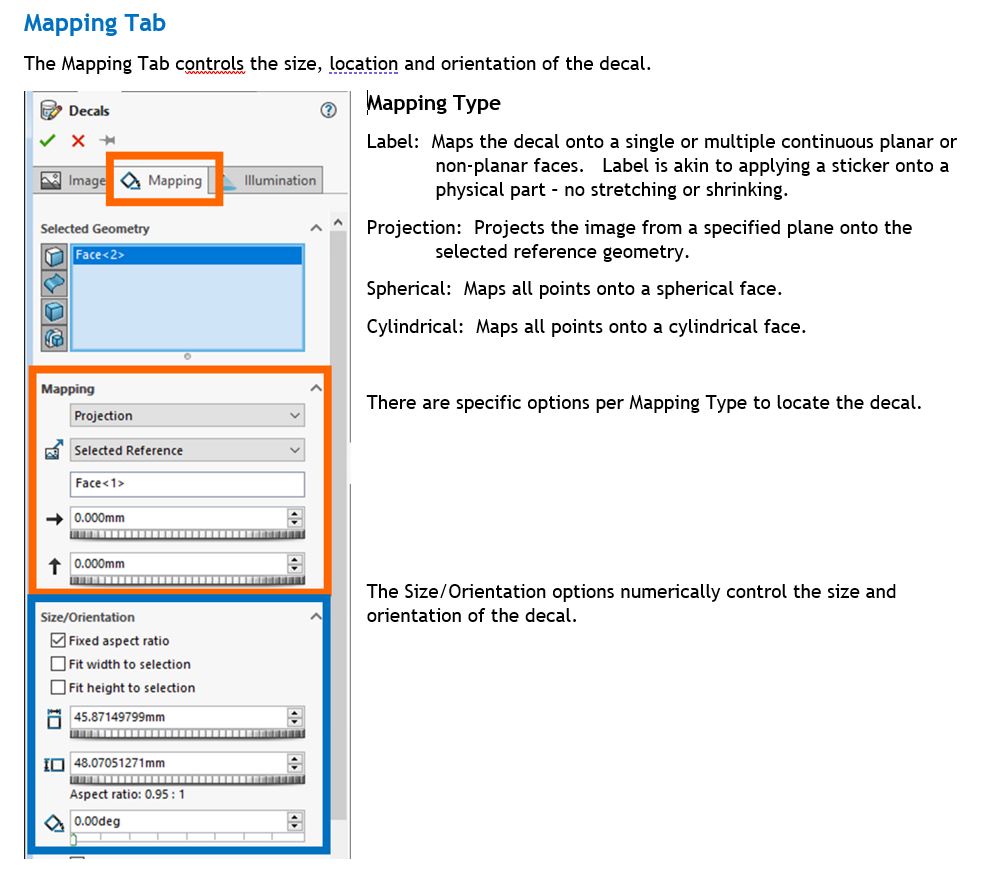
Applying Decals to your Models
This Rating Plate will be added to the bottom face of the housing.
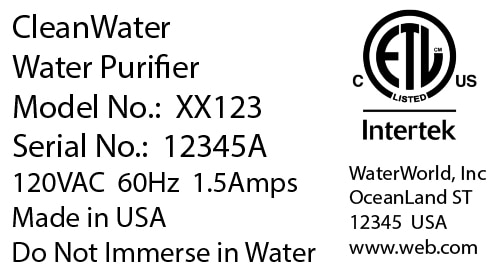
For the Mask Image options, we'll select No Mask and use the image as is, black text on a white background.
The bottom face will be selected as the Selected Geometry to apply the decal.
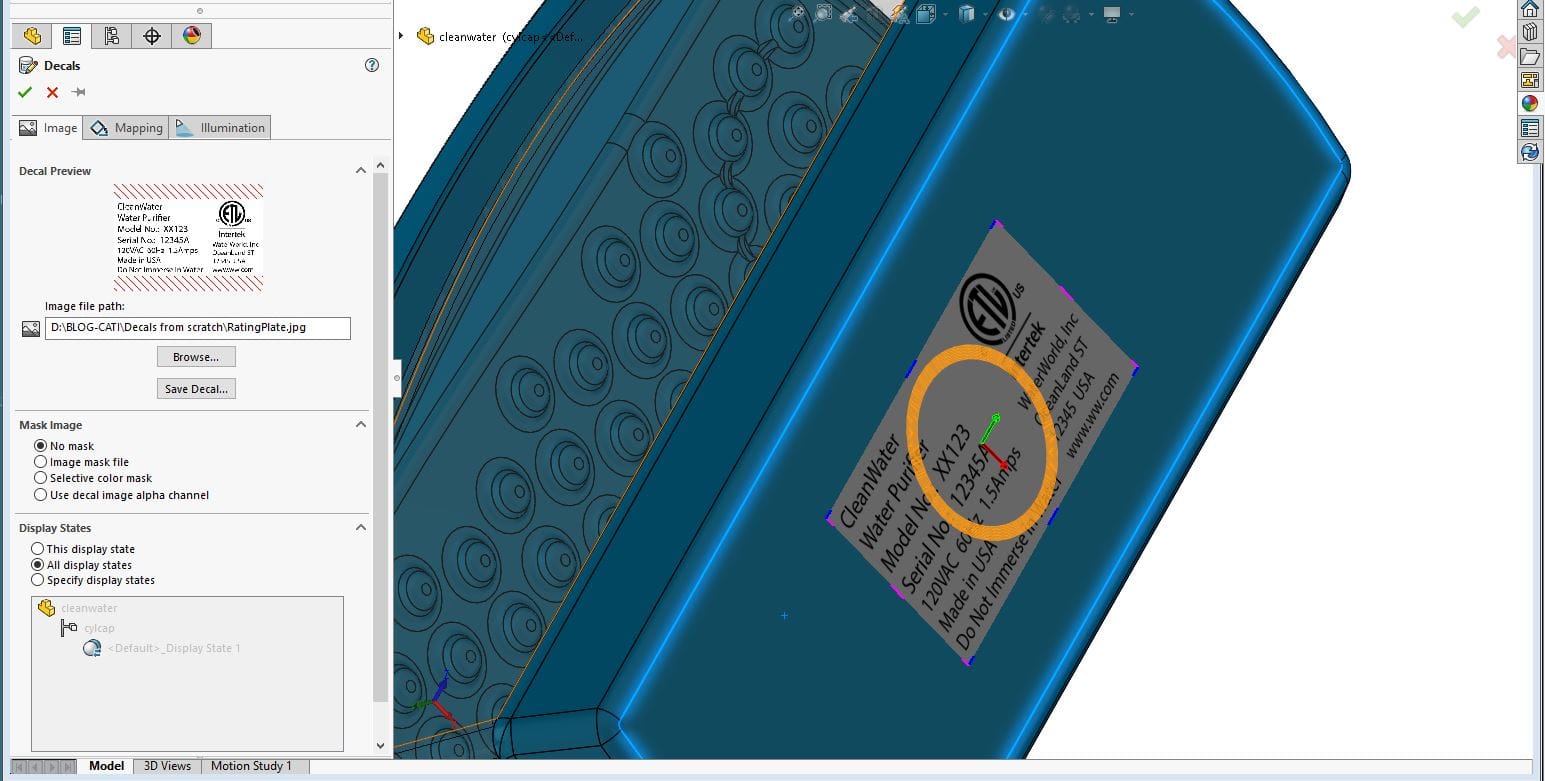
We can adjust the location, orientation and scale of the decal from the Mapping Tab and in the graphics area. Notice the pink and blue outlines around the decal and the orange ring on the decal. Click inside the outlines to pick up the decal and move it; click on the orange ring to spin the decal; and click on the corners of the outlines to scale the decal. Notice the Mapping Tab has many options to numerically adjust the decal as well.
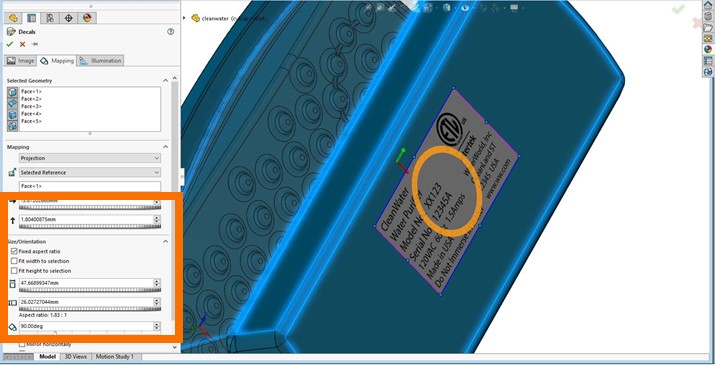
We can select and apply the decal across multiple faces. The Projection mapping mode allows the decal to stretch when it spans across the side faces.
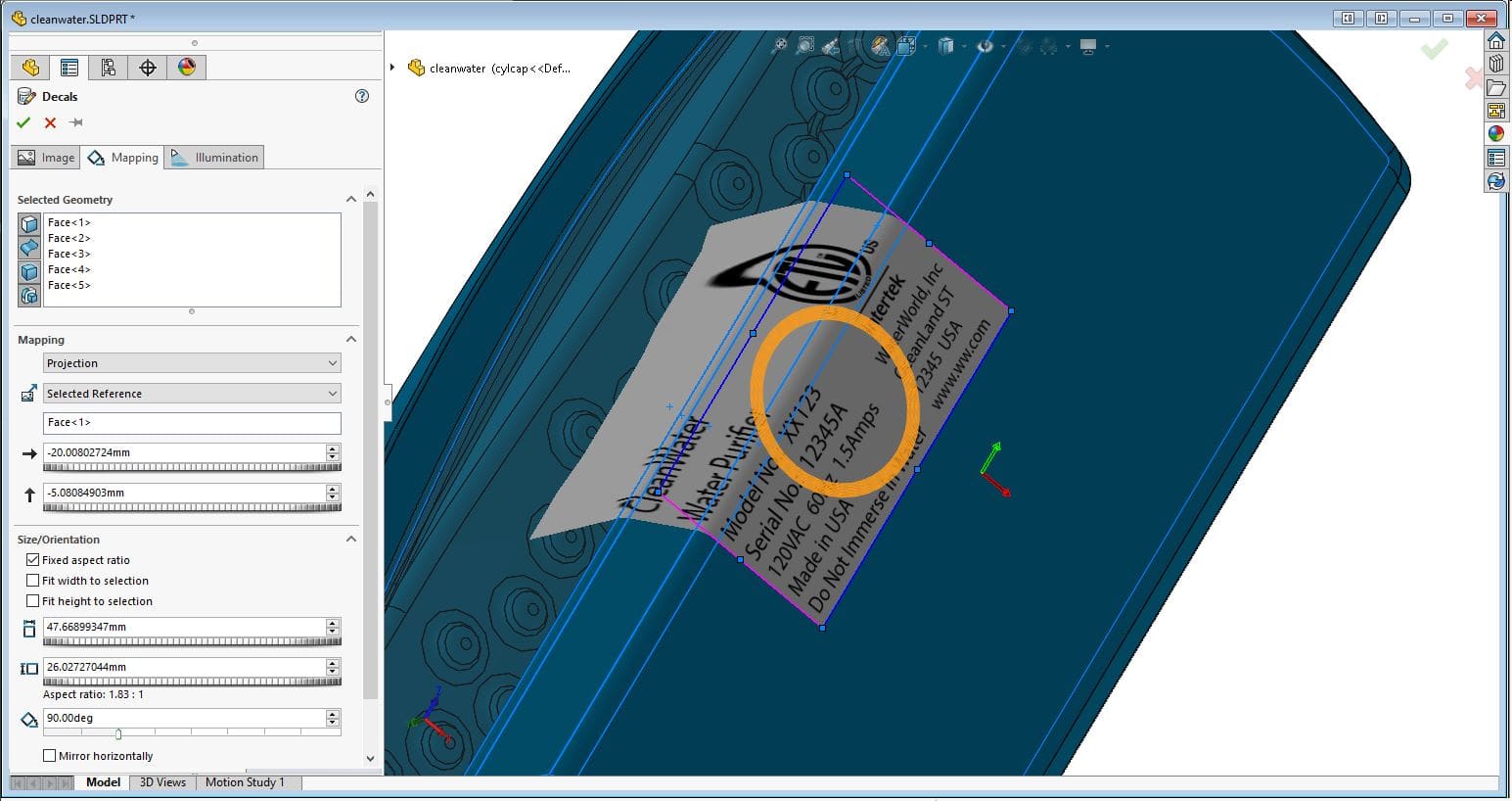
The Label mapping mode applies the decal as if it were a sticker that bends without stretching or shrinking. For best Label results, the edge between faces should be a linear edge.
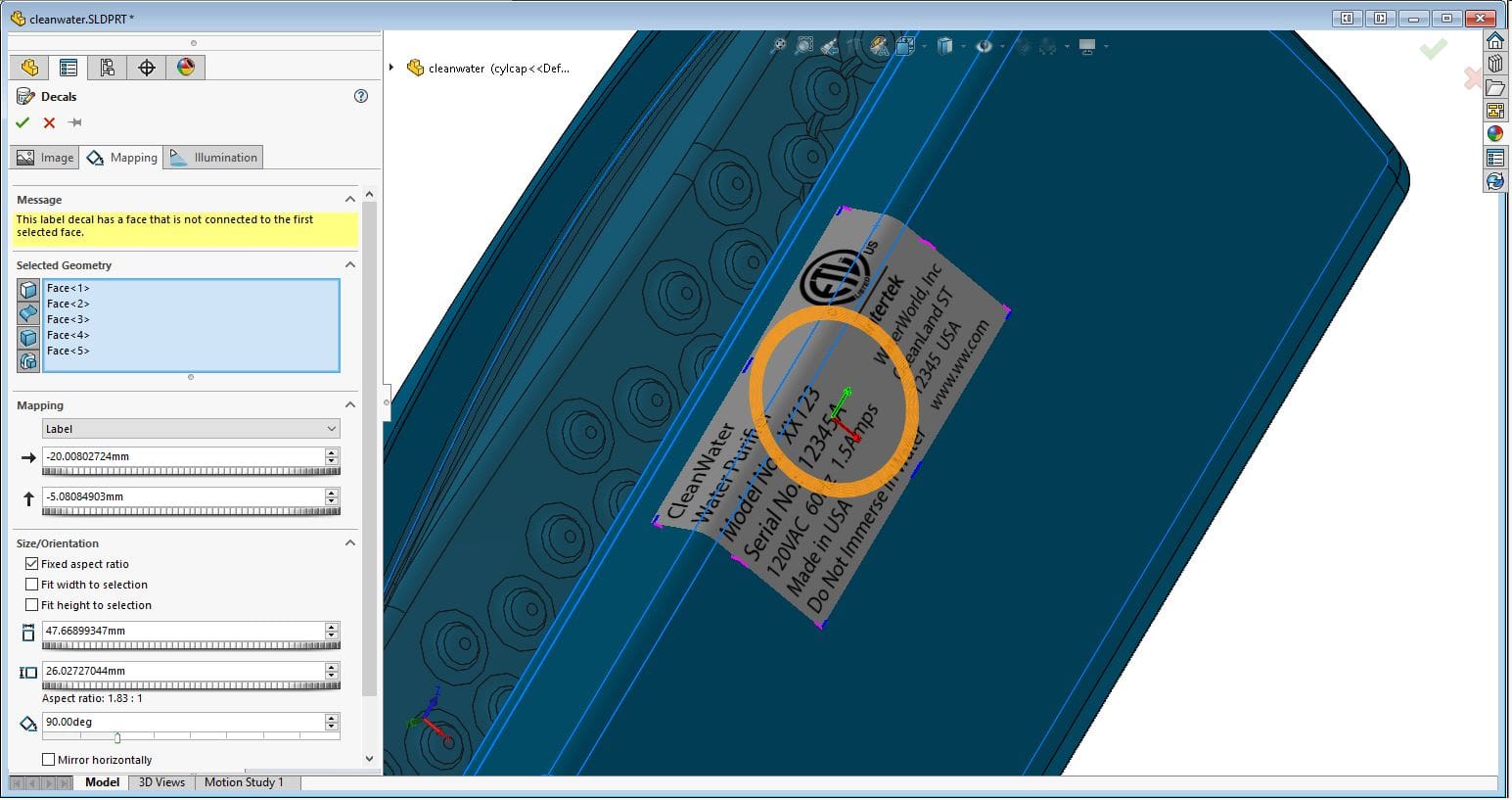
In this case, the decal is moved back to the center of the lower face, and the green check applies the decal.
This brand name will be added to the cap.

This image is a .png file, and the background is transparent. For the Mask Image options, we'll select Use decal image alpha channel. SOLIDWORKS recognizes the transparent background as the alpha channel.
The cylindrical face of the cap will be selected to apply the decal.
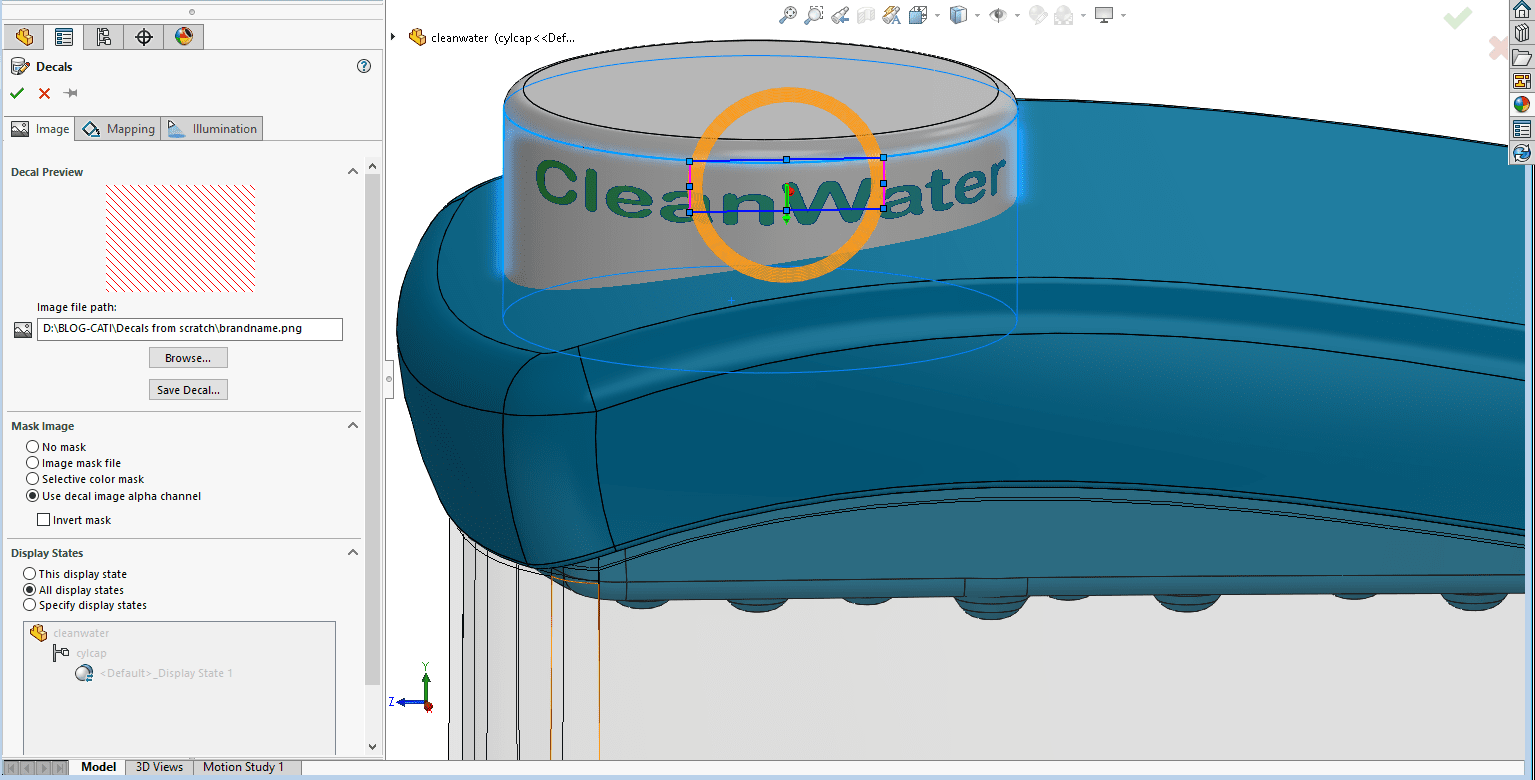
The Mapping Tab shows SOLIDWORKS identified the cylindrical face and automatically used the Cylindrical mapping mode. (SOLIDWORKS will also recognize a spherical face and set the Spherical mapping mode.)
We have similar options to move, spin, and scale the decal from the graphics area and in the Property Manager, along with options to locate the decal: rotate about the cylindrical axis and move along the cylindrical axis.
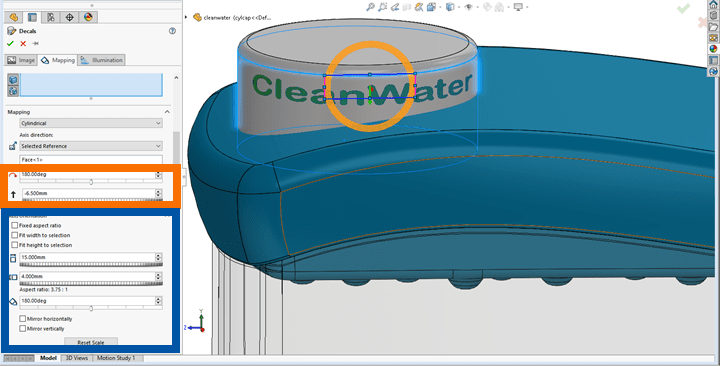
Green check applies the decal.
This logo will be added to the top face.

This image is a .jpg file with a white background. For the Mask Image options, we'll use the Selective color mask option to remove the background. Select the eyedropper and pick the white background color from the image shown in Decal Preview. Multiple colors can be selected to be removed and are listed in the grid. A color can be restored by selecting the color in the grid and click the Remove Color button.
For the logo, the decal face created with the Split Line will be selected to apply the decal.
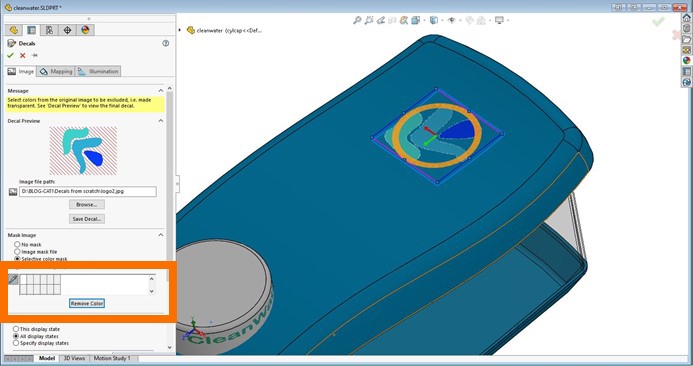
The white background is not completely removed, so let's try another approach.
For the Mask Image options, we'll use Image mask file. The Image Mask is superimposed onto the artwork. The black color of the Image Mask will denote which areas of the artwork are transparent. The white color of the Image Mask remains.

(See below for instructions to create an Image Mask.)
Browse to find the black and white Image Mask for the Mask file path.
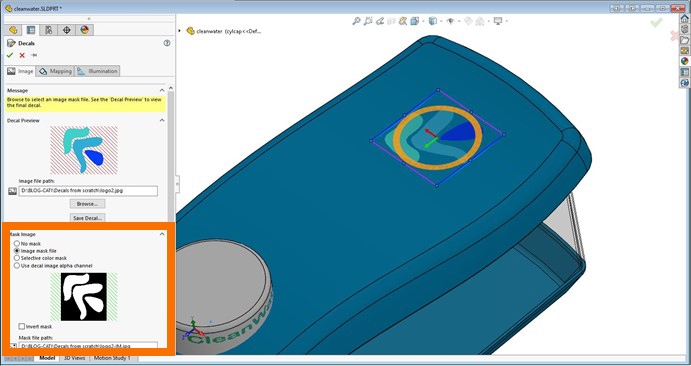
In the Mapping Tab, use the options Fit width to selection and Fit height to selection to scale the artwork to the width and height of the selected decal face.
Green check applies the decal.
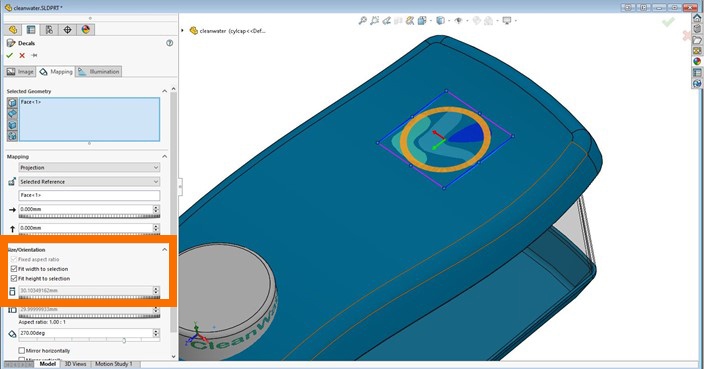
And our three decals have been added.
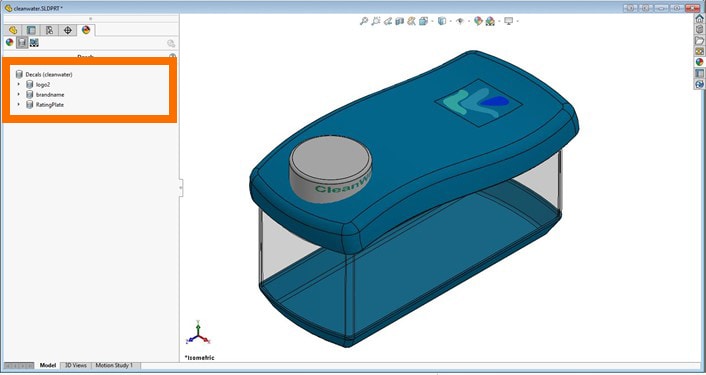
Additional Information:
- To edit a decal, in the Display Manager > Decal, expand the Decals folder, right click on a decal and select Edit decal. This brings you back into the Property Manager for any adjustments.
- Decals are only visible in Shaded and Shaded with Edges display styles. This is true for drawings as well.
- Saving a decal will make the decal available from the Task Pane > Decals folder.
- To create an Image Mask, here are two potential methods:
In Paint, open the decal artwork having a white background. File>Save As, and save the file to a Monochrome Bitmap image. There will be a warning about decreased image quality, click yes.
In Photos, open the decal artwork. Use the dropdown next to Edit & Create, select Edit. Select the Adjustments button at the top. On the right, drag the Color Slider to the left to 0. If needed, drag the Light Slider to the left to 0. Save a copy and provide a new name for the jpg image.
Both these methods create a black (dark gray) and white image, but in reverse. The black is the area of the artwork, the white is the background. In SOLIDWORKS, when selecting the Mask path file, click the checkbox Invert mask to reverse the colors in the Image Mask.
Creating custom decals in SOLIDWORKS from scratch is very straight forward and easy. Starting with high-quality artwork with crisp edges will yield a perfect SOLIDWORKS decal.
Laura Nickerson, CSWE
Application Engineer
Computer Aided Technology, Inc.
Source: https://www.cati.com/blog/solidworks-decals-from-scratch/
0 Response to "When I Try Adding Decals in Solidworks It Continuously Wraps the Decal"
Post a Comment